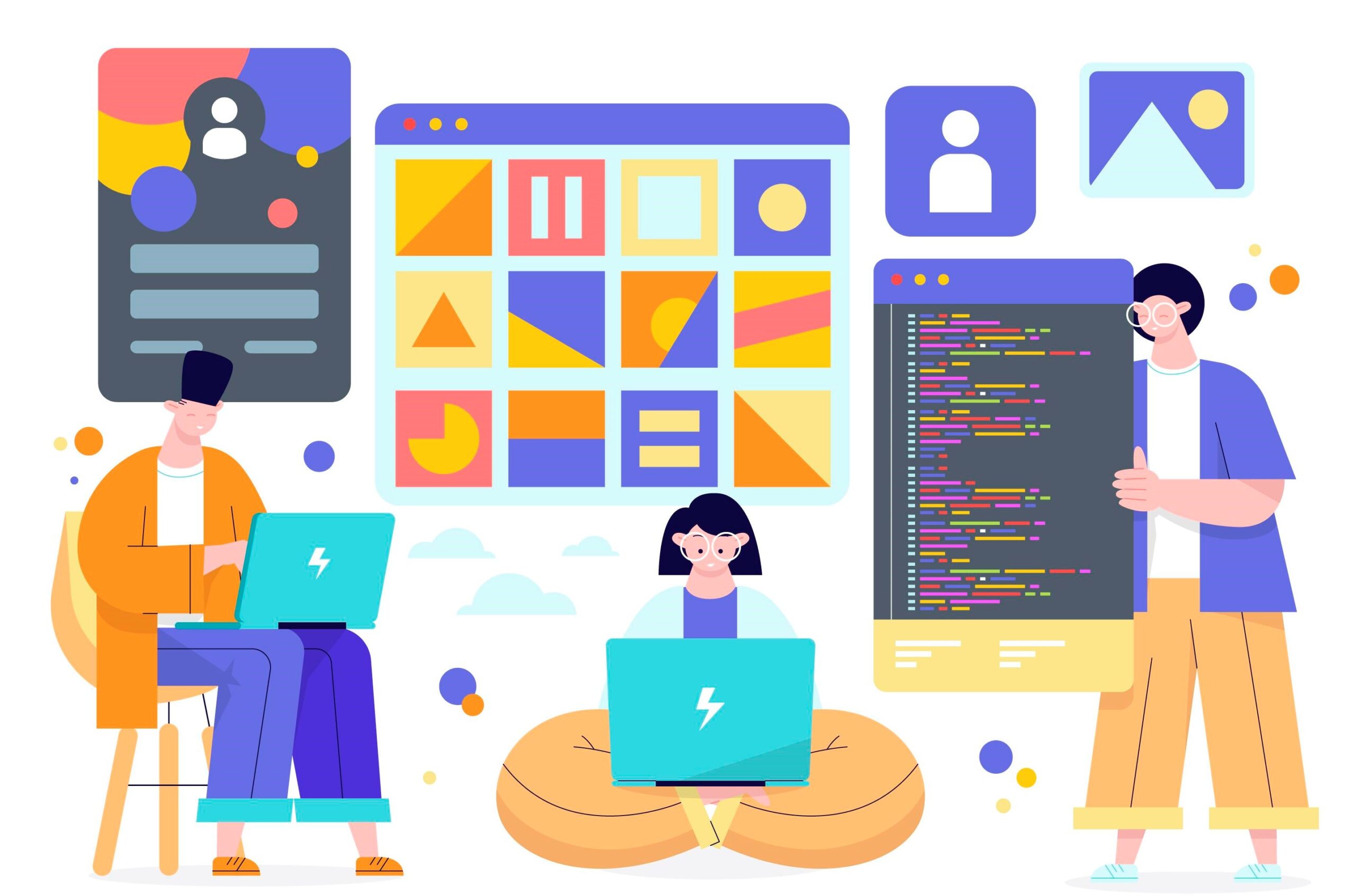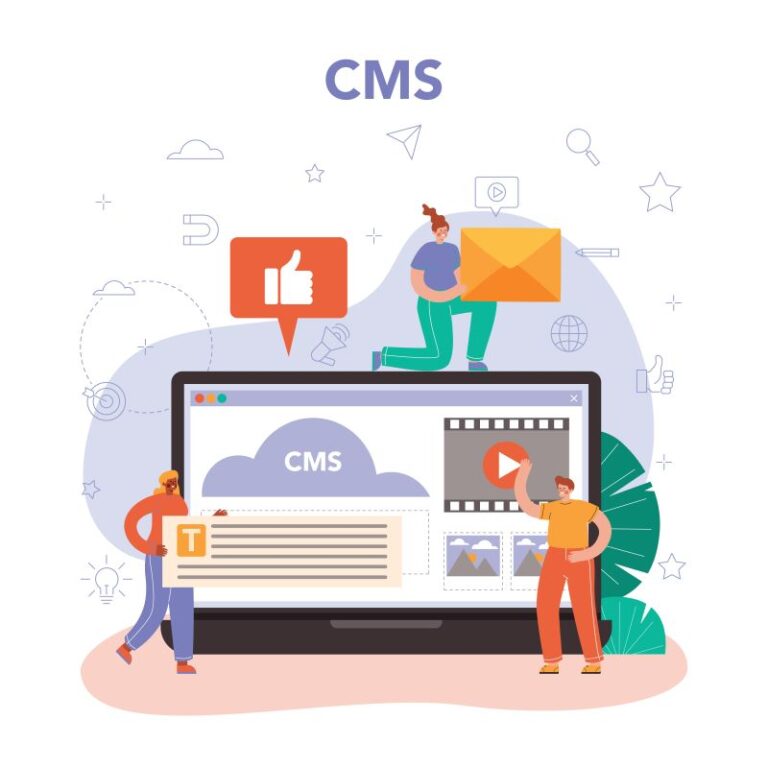Web development and web design are two crucial components in creating successful websites that are aesthetically pleasing, functional, and user-friendly.
Both fields require different skill sets and approaches, but web developers and web designers must work together to create successful websites.
This article sets out to explore the misconceptions surrounding web development and design, the distinctive functions and roles of web development and web design, and the dynamic interplay between web development and web design.
I. Common Misconceptions Debunked
There are many misconceptions surrounding web development and web design today. Unfortunately, these make it difficult for people to understand their importance and how they work together.
Some thought that web development and web design are the same or that one is more important than the other. They may use the terms interchangeably, assuming that they refer to the same thing.
Others may believe that web development is all about coding and programming, while web design is all about aesthetics and visuals.
The reality is that while there is some overlap between the two fields, web development, and web design are distinct and separate areas of expertise.
Web development is focused on the technical aspects of building a website, including programming, database management, and server-side scripting.
Web design, on the other hand, is focused on the visual and interactive elements of a website, including user interface (UI) design, user experience (UX) design, and graphic design.
Another misconception is that one field is more important than the other.
In reality, both web development and web design are equally important in creating successful websites.
A website that looks great but doesn’t function properly won’t be effective, just as a website that functions perfectly but looks unappealing won’t work either.
Thus, web developers and web designers have to collaborate closely to create websites that are both functional and visually appealing.
II. The Basics of Web Development

Web development is defined as the process of creating and maintaining websites. It includes a range of activities, such as coding, testing, and deploying websites.
Web developers are responsible for the technical aspects of building websites, including ensuring that the website is secure, scalable, and optimized for performance.
Programming languages, such as HTML, CSS, JavaScript, and PHP, are used to build websites.
There are different types of web development: front-end, back-end, and full-stack development of a website.
Front-end developers are responsible for creating the user interface that users interact with. They use HTML, CSS, and JavaScript to create the layout, design, and functionality of a website.
Back-end developers build the server side of a website. They work with databases, programming languages, and web frameworks to create the functionality of a website. They use technologies such as PHP, Ruby, and Python to build and maintain the functionality of the website.
Full-stack developers are skilled in both front-end and back-end development. They have a comprehensive understanding of both areas and can take on a range of tasks, from designing the UI to managing the database.
III. The Basics of Web Design
Web design involves designing the layout, color scheme, typography, and overall aesthetic of a website. The goal is to create a website that is visually appealing, easy to use, and engaging for the user.
In their job roles, web designers use various software and tools, such as Adobe Photoshop, Sketch, and Figma, to create website mockups and prototypes.
There are two main areas of web design: user interface (UI) design and user experience (UX) design.

UI designers focus on creating the visual design of a website, such as buttons, menus, and other interface elements. They are also involved in designing the visual elements of the website, including the layout, color scheme, and typography.
They work closely with web developers to ensure that the design is technically feasible and can be implemented effectively.
On the other hand, UX designers are responsible for designing the website’s user experience, such as navigation, usability, and user engagement. They focus on creating a website that is intuitive, easy to navigate, and meets the needs of the user.
They conduct user research, create user personas, and develop user flows to ensure that the website meets the needs of the target audience.
IV. Overlaps between Web Development and Web Design
While web development and web design are distinct areas of expertise, there are some overlaps between the two fields.
Here are a few examples of where the two fields intersect:
1. User experience (UX) design
While UX design is primarily focused on the user experience of a website, it also involves some elements of web development.
For example, UX designers need to have an understanding of how websites are built and how different features and functionalities can be implemented.
UX designers must be able to understand front-end development languages, including HTML, CSS, and JavaScript to design user interfaces that can be implemented effectively by developers.
2. Responsive design
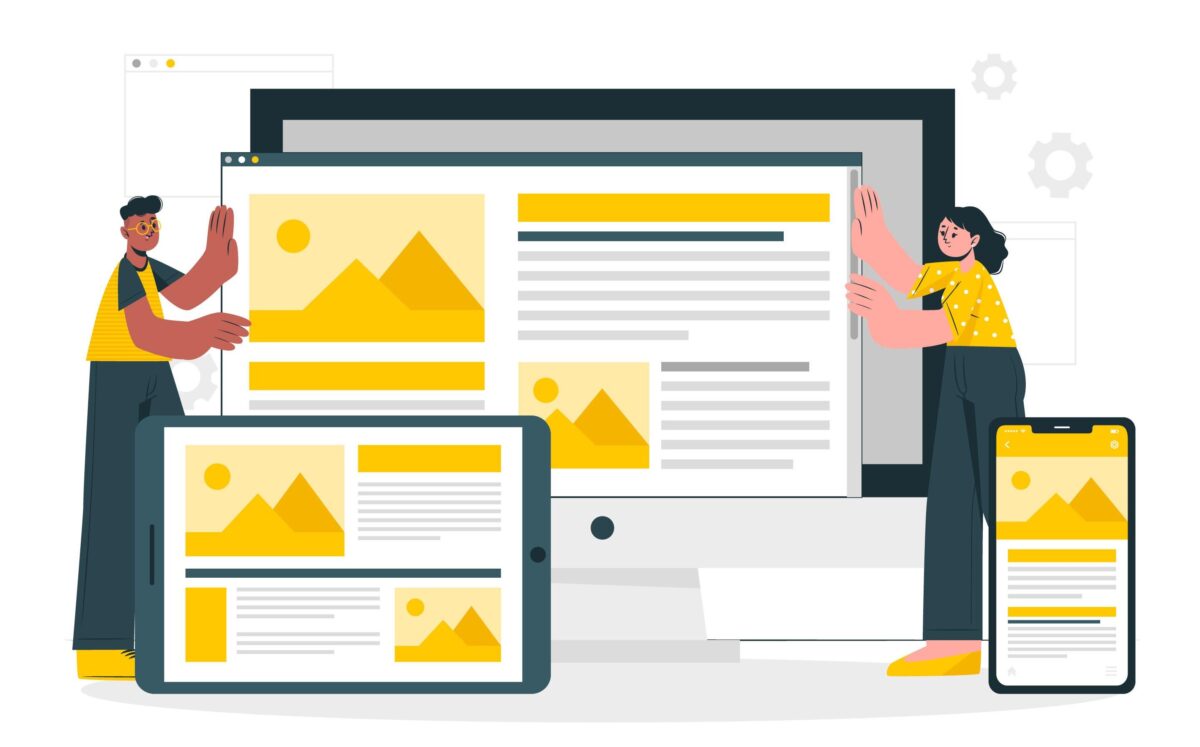
Responsive design is the practice of designing websites that can adapt to different screen sizes and devices, such as smartphones, tablets, and desktops.
While responsive design is primarily a design concept, it also requires some knowledge of web development.
Responsive websites typically use technologies such as CSS media queries and JavaScript to adjust the layout and functionality of the website based on the device it is being viewed on.
3. Accessibility
Web accessibility is the practice of ensuring that websites are usable by people with disabilities. Although accessibility is primarily a web development issue, it also has implications for web design.
For example, web designers need to ensure that their designs are visually accessible to people with color blindness or low vision and that the website is easy to navigate for people who use screen readers or other assistive technologies.
4. Performance optimization
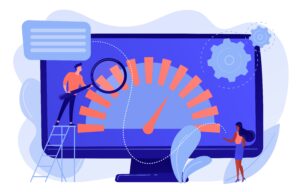
Again, while performance optimization is primarily a web development issue, it also has implications for web design.
Web designers have to be aware of the impact that their design choices can have on website performance, such as using high-resolution images that can slow down page load times.
As such, designers need to collaborate with developers to create designs that are both visually appealing and optimized for performance.
V. Collaboration and Communication Between Web Developers and Web Designers
As you can see, while web development and web design are separate areas of expertise, they are closely interlinked, and both are necessary for creating a website that is both functional and visually appealing.
Web developers and web designers must collaborate and communicate to develop successful websites.
Web developers can ensure that the website is technically sound, secure, and scalable, while web designers can ensure that the website is aesthetically pleasing and easy to navigate.
A common problem that can arise when there is a lack of collaboration and communication between web developers and web designers is that the website may not meet the needs of the end user.
For example, a website that looks beautiful but is difficult to use can lead to frustration for the user and ultimately result in a high bounce rate. Similarly, a website that is technically sound but looks unappealing can also put off potential customers.
To ensure effective collaboration and communication between web developers and web designers, both parties need to understand each other’s areas of expertise and work together to find solutions that meet the needs of the website and its users.

Web designers must understand the capabilities and limitations of web development to create designs that are both aesthetically pleasing and technically feasible. Similarly, web developers must work closely with web designers to ensure that the website’s functionality is not compromised by design choices.
This may involve having regular meetings to discuss progress, sharing prototypes and designs, and seeking feedback from both parties. There should be a constant exchange of ideas and feedback.
It’s also important for web developers and web designers to have a shared understanding of the project goals and objectives. This ensures that both parties are working towards the same end goal and can help prevent misunderstandings or miscommunications along the way.
VI. Beyond Technical Skills: The Importance of Soft Skills in Web Development and Web Design
In addition to technical skills, web development, and web design require a range of soft skills to complete a project successfully.
Soft skills are personal attributes that enable one to work effectively with others.
Below are the identified soft skills that are essential for both web developers and web designers. They include problem-solving, communication, and project management skills.
Soft skill #1: Problem-solving skills
The ability to problem-solve is important in both fields of web development and web design. Both fields of expertise require analysing problems, identifying solutions, and implementing them to fix complex technical and design challenges.
Common complex technical challenges that both web developers and web designers encounter are the integration of different software platforms, optimising website performance, or troubleshooting bugs.
Effective problem-solving requires combining technical expertise and critical thinking skills, the ability to work under pressure, and staying focused on finding solutions.
Soft skill #2: Communication skills
Both web design and web development require frequent collaboration and communication between team members, clients, and stakeholders. Effective communication skills are a must for any project to be completed successfully.
Clear communication needs to take place for all to understand the project goals, requirements, timelines, and expectations. Both web developers and web designers need to communicate effectively with clients to ensure they are fully understood. The web developer and web designer also need to communicate with each other to coordinate their work and avoid misunderstandings.
Soft skill #3: Project management skills
Good project management ensures that projects are progressing according to the timeline and on track. This consists of setting manageable timelines and clear goals, allocating resources effectively, and monitoring progress.
Managing projects require effective communication with all team members so that everyone is aware of individual responsibilities and deadlines.
Project management also involves the ability to adapt to changes in project scope or requirements, and manage any risks or issues that arise.

How to improve soft skills
One way to improve the soft skills discussed is to take online courses and attend workshops. These can help you build the specific skills that you need. Another way is to seek feedback and mentorship from colleagues, mentors, and supervisors. A mentor can help you identify areas to improve, and provide feedback and guidance on how to develop your skills.
Other ways include joining professional organisations that provide training and networking opportunities, practising the skills by taking up projects and reading and researching topics related to soft skills in web development and web design. Reflecting on how to apply the insights you gained to your work is also essential.
VII. Specialisation vs. Versatility: Navigating Web Development and Web Design Careers
Perhaps you’re asking this question when it comes to choosing your career. Is it better to specialise in one field or to be more versatile?
Both options have their pros and cons. It’s important to weigh the options and carefully consider which path is right for you.
Specialising in one specific area allows you to develop expertise and in-depth knowledge in a particular skill set. You become more valuable and able to command higher pay as employers are willing to pay for someone who has a deep understanding of a high-demand area.
In cases where employers are looking for someone with a specific set of technical skills, you would be more sought-after.
For example, a front-end developer who is an expert in JavaScript frameworks may have a better chance of landing a job than one who is a jack of all trades but a master of none.
Conversely, being versatile is advantageous, especially in a fast-evolving field like web development and design. You will be more valuable to employers who are looking for someone who can wear multiple hats.
Also, having a wider range of skills may land you more job opportunities and career advancement. For instance, a full-stack developer may be able to apply for jobs that require expertise in both areas while a front-end developer may not.
Being versatile in your skills allows you to work on a wider range of projects and adapt easily to changes.
The ultimate decision still lies in personal interests, skills, and career goals. You may excel in a niche, specialised role while others may like the challenge of being a generalist.

Balancing Specialisation and Versatility in Web Development and Web Design
While specialisation allows you to become an expert in either web development or design, being versatile allows you to work on a wider range of projects and expand your skill set.
Here are some tips to balance specialisation and versatility in both careers:
1. Know and identify your strengths and interests
Take up courses or do internships to find out and identify what areas of web development or design you excel at, and the projects you enjoy working on.
Identify the areas you may want to specialise in and where you may want to develop more versatile skills.
2. Keep up with the latest trends and technologies
Read up on web development and design development to remain competitive and stay relevant. It’s important to check that your skills are still relevant or if you need to upgrade.
You may subscribe to online newsletters or Google Trends on the topic of web development and design, join tech forums or attend webinars to keep yourself relevant.
3. Expand your skill set
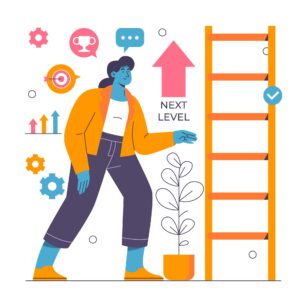
If you specialise in front-end web development, you may want to find out more about back-end development or database management.
Similarly, if you are a web designer, attend courses or read up on areas related to web development.
Expanding your skill sets and knowledge in different areas helps you gain a wider understanding and perspective on the projects you’re working on and expand your career opportunities.
4. Network and collaborate with others
Working with others with different skill sets from yours helps you balance specialisation and versatility. Networking and collaboration with others allow you to learn from others’ experiences, and develop new skills or areas of specialisation.
Collaborating with other professionals allow you to work on more versatile projects and expand your horizon.
5. Evaluate your career goals continuously
As you gain more skills and experience, you may need to evaluate your career goals and adjust your approach. Perhaps you may have a better idea of which area to specialise in or to learn more about.
Adapt to changes in the industry and adjust your career goals accordingly to balance specialisation and versatility.
Conclusion
Web development and web design are important components of creating successful websites. In reality, web developers and web designers work together closely to create websites that are both functional and visually appealing. Therefore, soft skills such as collaboration and communication between both teams are important to a project’s success.
Developing soft skills such as project management are as important as technical skills in web design and development. Working on them can help you excel in your career, whether you specialise or become more versatile.
Constantly update yourself and stay relevant as web development and web design are always evolving. Carefully consider your career goals as you strive to build a rewarding career in this exciting industry.
Websparks is a full-service web tech company based in Singapore. Over the past 14 years, we have built successful award-winning websites by providing web development, web design and other web application services to our clients.
Our teams of web developers and web designers work closely to deliver successful web solutions to our clients and earned our reputation as the developer of choice.
Check out our portfolio and list of services.
Contact us if you need professional help to build your dream website.

